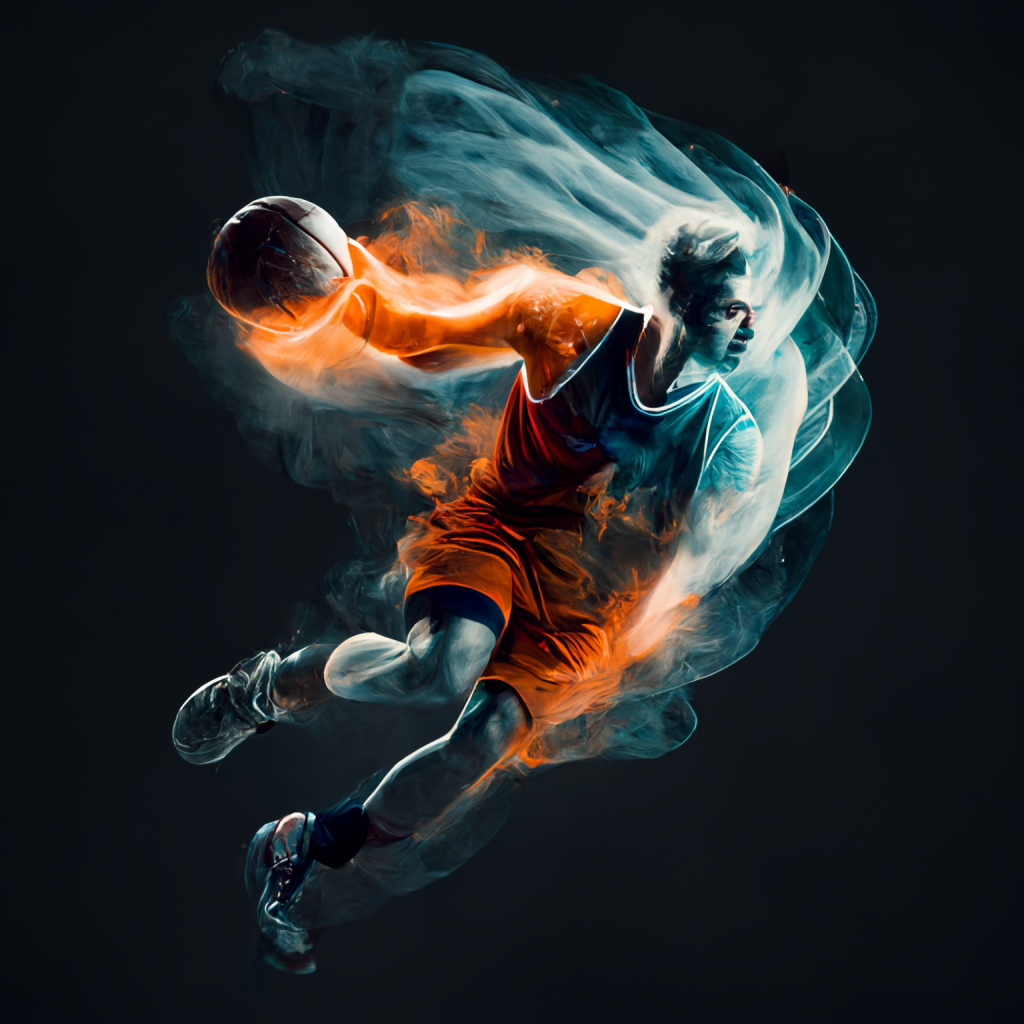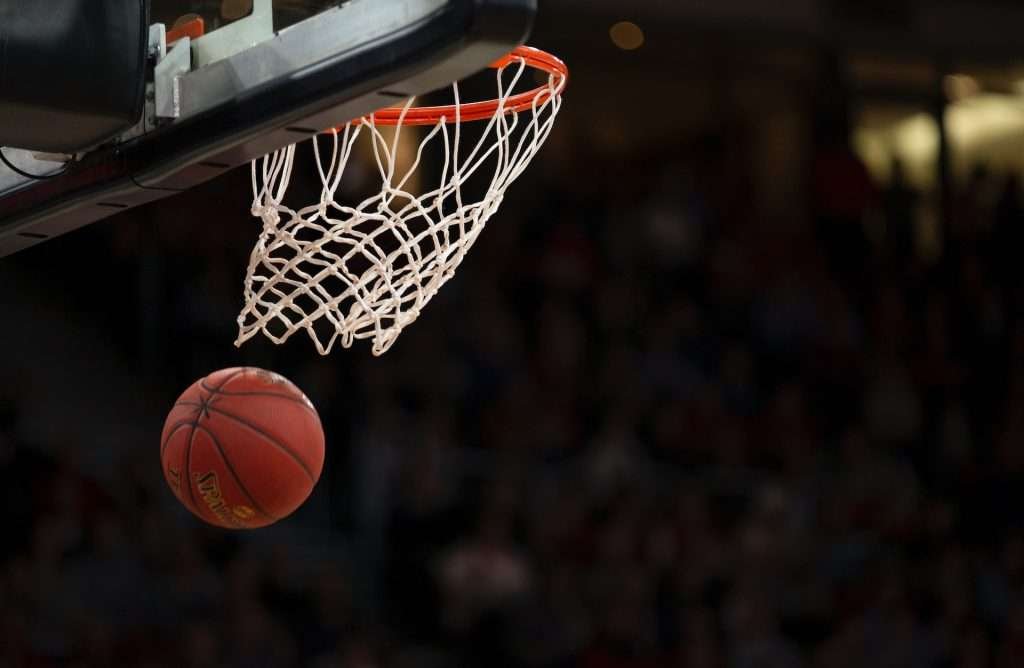The Fundamental Role of Hand Placement
Hand placement serves a vital role in the art of shooting a basketball. Whether it’s a high-pressure free throw or a long-range three-pointer, the proper hand placement can be the difference between a swish and a miss. In fact, many players who struggle to shoot the ball accurately often find that the root of their issues lies in their hand placement. By mastering this fundamental aspect, players can rectify a wide array of shooting problems, paving the way for consistent, accurate shooting.
Let’s take the example of NBA legend, Stephen Curry. Despite his relatively small stature in the league, Curry’s shooting accuracy is second to none. One of the keys to his success? His meticulous focus on hand placement.

The Importance of Symmetrical Mechanics
While acknowledging that every player may not shoot identically, aiming for as close to perfect symmetrical mechanics as possible can lead to shooting the ball in a straight line and minimizing unnecessary movements. The closer a player can get to this ideal, the more beneficial it becomes in enhancing their performance on the court.
Consider Klay Thompson, Curry’s teammate on the Golden State Warriors. Known for his “picture perfect” shooting form, Thompson’s hand placement and symmetrical mechanics are textbook examples of how to shoot a basketball efficiently and accurately.
Finding the Middle and Positioning the Hands
Finding the middle of the basketball is straightforward. Simply locate the air pump, where the needle is inserted to inflate the ball. Players can either place their index finger here, split it, or some might prefer to place their middle finger. The non-shooting hand, typically the left hand for right-handed players, should then be positioned directly on the side of the ball.
In terms of the shooting hand, it should ideally be on top or behind the basketball. This orientation allows for a clean shot without having to add an extra rotation. What players should avoid is having the shooting hand in front of the ball or on its side.

The Consequences of Incorrect Hand Placement
A common issue with hand placement involves the shooting hand facing the side or diagonal. This stance can disrupt the shot path and the line of release to the basket. Keeping the fingers facing forward towards the basket as much as possible allows for a perfect ball lift, resulting in a good backspin on the ball that aids rotation and ensures an ideal arc to the rim.
For the non-shooting hand, thumbing the ball or pushing it is a common mistake. While some might argue that it’s not a mistake and it’s okay to do so, the fewer movements in your shot, the better. The non-shooting hand should be kept flat and on the side of the ball to guide it, keep it balanced, and allow a straight shot to the rim.
The Power of Practice: Improving Your Hand Placement
So, how does one go about correcting these issues and improving their hand placement? One of the easiest methods is to take the index finger and thumb completely off the ball, leaving only three fingers on it. This strategy enables a straight and easy release without interference from the other fingers.
It’s also worth noting the importance of the lift path. Keeping the ball in a straight line allows the elbow and wrist to be underneath the ball, providing a straight and perfect path. When releasing, the elbow can push up, and the wrist can snap down, aiding in a perfect rotation and arc for the shot.
In Conclusion: The Impact of Proper Hand Placement
In conclusion, achieving the right hand placement in basketball shooting is a combination of getting the shooting hand underneath the ball, keeping the non-shooting hand flat, and maintaining a straight lift path. These simple yet essential

Here’s a detailed guide with real-life examples on how to do it:
Proper Stance and Footwork:
- Stand with your feet shoulder-width apart and parallel to the basket.
- Keep your knees slightly bent and your weight evenly distributed on both feet.
- Align your shooting-side foot slightly ahead of the other foot.
- Maintain a good balance throughout the shooting motion. Real-life example: Watch professional shooters like Stephen Curry or Klay Thompson. Observe their stance and footwork during their shooting motion.
Hand Placement:
- Place your shooting hand underneath the basketball, with your fingertips spread evenly.
- Position your non-shooting hand on the side of the basketball for support and guidance.
- Keep your shooting hand and non-shooting hand relaxed, but firm. Real-life example: Study videos of players like Ray Allen or Reggie Miller, focusing on how they position their hands on the basketball while shooting.
Shooting Mechanics:
- Start the shooting motion by bringing the basketball up and slightly in front of your face.
- As you begin to shoot, extend your shooting arm fully, using your wrist to generate power and backspin.
- Follow through with your shooting hand, keeping your elbow straight and your fingers pointed towards the basket.
- Use your legs to generate power by pushing off the ground and transferring your weight forward. Real-life example: Analyze slow-motion replays of NBA shooters, paying attention to the fluidity of their shooting motion and how they utilize their legs.
Eye Focus and Alignment:
- Keep your eyes focused on the target (the rim) throughout the shooting motion.
- Align your shooting hand with the basket by positioning it directly behind the basketball.
- Avoid looking at the flight path of the ball; instead, maintain visual focus on the rim. Real-life example: Watch shooters like Kevin Durant or Dirk Nowitzki, observing how they maintain consistent eye focus and alignment towards the basket.
Repetition and Practice:
- Develop muscle memory by repeating the correct shooting form consistently.
- Start close to the basket and gradually move back as you gain confidence and accuracy.
- Incorporate shooting drills that simulate game situations, such as shooting off the dribble or coming off screens. Real-life example: Set aside dedicated practice sessions to work on your shooting form. Record yourself to analyze and make adjustments as necessary.
Seek Feedback and Coaching:
- Ask experienced coaches or skilled players to evaluate your shooting form.
- Participate in shooting clinics or camps where experts can provide guidance.
- Be open to constructive criticism and actively work on implementing suggested improvements. Real-life example: Attend basketball camps or clinics where shooting coaches can analyze and provide feedback on your shooting form.
Remember, improving shooting form takes time and consistent practice. It’s important to be patient and persistent. With dedication and attention to detail, you can enhance your shooting abilities and become a more accurate shooter on the basketball court.




